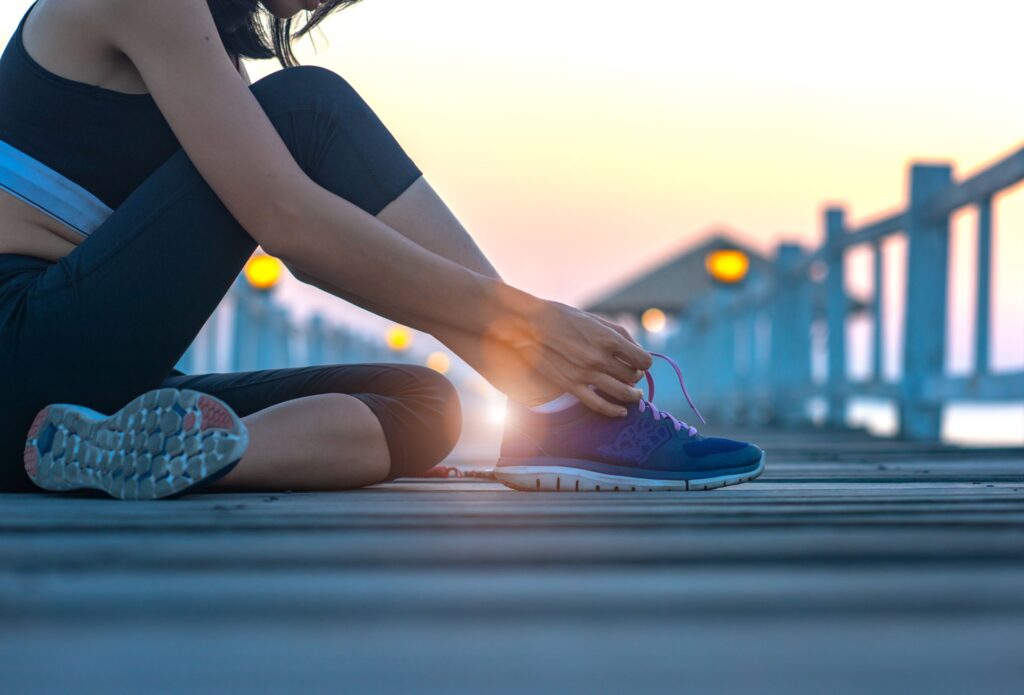Getting Started With Running: Pointers For Beginner Runners
It’s time to put on your running shoes!
There are so many reasons why running is enjoyed by millions of people around the globe. Whether you’re training for a half marathon race or looking forward for some running events or just logging miles for fun, running is good for your body and mind and it requires very little equipment. All you need is a good pair of running shoes and the willingness to get started.
Running is free, you can do it anywhere, and it burns more calories than any other mainstream exercise. Regular running can reduce your risk of long-term illnesses, such as heart disease, type 2 diabetes and stroke. It can also boost your mood and keep your weight under control.
As simple as continuous running may be, it certainly isn’t easy. Especially when you’re a beginner. You have to start where you are, not where you think you should be. If you go further or faster than you’re ready for, your body may not be in the best running form yet and can’t adapt quickly enough and you’ll get injured.
That’s why, with plans designed by a highly experienced running coach, we’ve developed this list of beginner’s running tips to take you from your very first steps to stepping up for your first running event.
You’ll find plenty of information in this guide, from safety precautions to nutrition tips and more. It’s probably more information than you need to head out on your first run, but you can bookmark this page and revisit it as needed to guide your running journey.
So, are you ready?
Getting Started
Whether you’re brand new to running or you’re getting back to it after a long break, it’s important to start out easy and build up gradually so you avoid injury. Here are some tips to get you started off on the right foot. Let’s go!
1. Get comfortable shoes
You don’t have to spend an arm and leg on them but look for shoes that are well constructed with good ventilation or at least breathable mesh around the toe area. Buying the right pair of shoes will make a huge difference in how much you enjoy your run and how quickly you improve. A good way to get the most bang for your buck is to go to a running store and let a knowledgeable person analyze your gait and foot type. He or she will most likely ask you to walk on a treadmill where they can view your feet hitting the ground. This should give them an idea of what type of running shoe will work best for you and even some ideas for brands.
2. Safe running
Injuries like twisted ankles and pulled muscles are common for new runners; thus, it’s very important to wear supportive and appropriate shoes when running as well as other gear such as a wristwatch or reflective vest (depending on weather conditions) so that cars can see you coming.
3, Don’t run on a full stomach
Although it can be tempting to run fast on an empty stomach, your body needs fuel for optimum running performance, so if this is your eating habit you will likely feel lightheaded or nauseous at the beginning of your run—and will probably have an upset stomach during the day after as well.
4. Choose a comfortable time of day and location
Running in the morning is great because it gives you a lot more energy than later on when you will probably be tired from work or school. Also, running outside in nature is much better than being stuck on a treadmill in a gym (which can be fun too, but still). Running along a busy street should be avoided if possible (or better yet get an app that maps alternative walking routes away from traffic).
5. Don’t skip warmup or cool-down
Running is different from walking or other forms of exercise, which is why most runners do walk breaks for a few minutes to loosen up their muscles before they start running. It’s also important to warm up before you run each day because your body gets stiff sitting at a desk all day, and it helps your heart rate go up more safely when you’re running.
Stretching properly before and after running is crucial for injury prevention and staying limber; plus it helps prevent muscle pulls as well since stretching reduces stiffness in muscles and loosens tendons as well, increasing flexibility—and lessening pain!
Proper stretching includes static stretches where you hold each pose for 15-30 seconds to increase flexibility; dynamic stretches that involve moving through your joints while holding the stretch to increase strength and range of motion; plus doing exercises to improve pelvic stability and balance which can help a beginner runner avoid injuries such as IT band syndrome.
6. Start out slow
Try running for just one minute and walking for one minute, then repeat the sequence until you’ve warmed up enough to run continuously. If you have any health problems or injuries, consult your doctor before starting an exercise program like running.
7. Finding your pace
It’s important to find a conversational pace at which you can breathe comfortably so that you don’t get tired too soon, but not so slow that it’s boring. This will help ensure that your breathing and heart rate stay at an aerobic level; if it feels too hard or too easy, pick up the pace or slow down accordingly until you find one that works well for you.
8. Make sure you’re hydrated
On longer runs, be sure to drink plenty of water or sports frink—but don’t chug it all down at once! A good rule of thumb is about 20 ounces per hour if exercising for less than 90 minutes and 30 ounces per hour for those spending more than 90 minutes at a stretch.
9. Vary your workouts
Running the same path or track is good for building endurance, but trying a new workout can help break through frustrating plateaus or keep the activity from becoming boring, which can lead to you giving up on the activity overall.
10. Running on hills
Hills are challenging because they require more effort than flat terrain since harder work means increased oxygen intake and faster heart rates in order to maintain the same pace as on a flat surface; thus, it’s important to increase your pace or shorten your stride to compensate for hills.
11. Running on trails
Trails are different from running on the road because there are more obstacles to avoid, which means you have to be more aware of what’s around you so that you don’t trip; thus, it’s important to keep your head up and pay attention to where you’re going.
12. Take breaks
If you feel pain in any part of your body while running, stop immediately; don’t attempt to push through the pain since it will only get worse if ignored (and make it harder for you to run in the future).
Quitting isn’t an option, just stay motivated! But when it comes to stopping while running, there are three scenarios when you should consider stopping: if you’ve injured yourself and cannot continue without pain; if your breathing is laboured; or if your heart rate is above 160 bpm.
13. Following a schedule
It’s best to start out at just under a half-hour per day (after warming up) and then increase by five minutes per week until you reach an hour of daily running—that way, your body has time to adjust without injury before increasing the amount of time spent running each day.
14. Set goals
For example, if you want to do a 5K (3.1 mile) race, set milestones for yourself such as losing 15 pounds or running twice as far as you did the previous week until you reach your goal.
15. Get a run-keeper or GPS watch
While it’s not a requirement to run outside, it’s still a good idea to track your entire distance and sprint paces since you can keep a more remote control over your performance.
16. Cool down after each workout
Most people finish their run with a quick walk or jog to cool down before they are even able to get their water bottle out of the fanny pack; then they hop in their car and head inside as soon as possible!
To avoid delayed onset muscle soreness later, take at least 30 minutes after every workout for light stretching and relaxation exercises such as yoga. Another option is taking a cool bath or shower—but make sure not to start this running routine until after you’ve reached home!
17. Read a book about running or subscribe to a running blog/podcast
When starting out, reading and listening to books, articles, or podcasts about running is invaluable because it helps you learn not just how running works but what to expect on the road ahead. Not only that but there are tons of fun inspirational stories from runners all over the world that go along with it!
18. Find other runners If possible find a running buddy to run with.
Exercise is much more fun when you do it with a friend! I don’t find running alone very enjoyable, but when I run with others it’s really great. I like finding a good beginner’s pace and letting them set the pace for a while as well as interchanging positions. Makes it so much easier to increase your pace over time….one step at a time.










